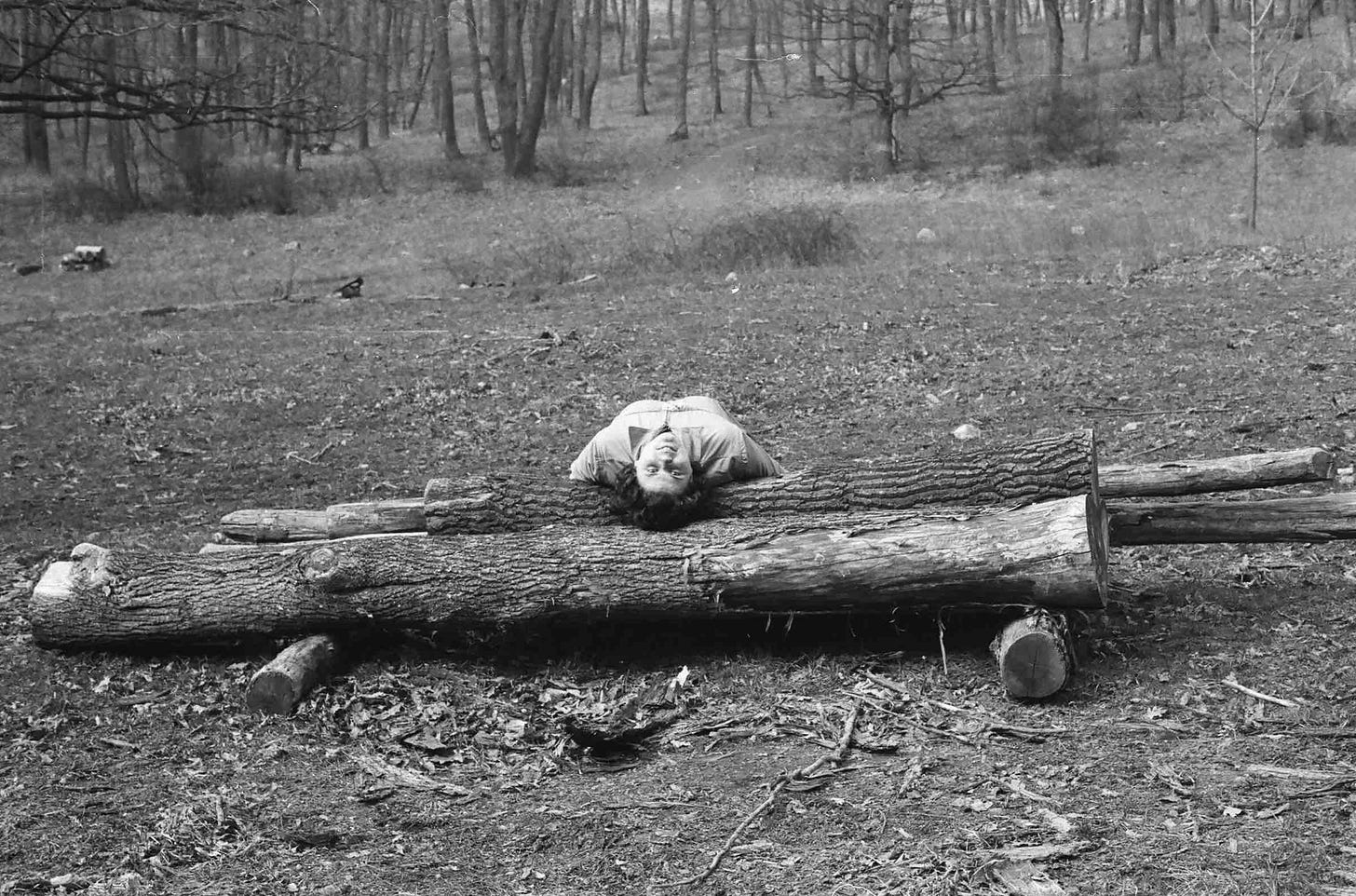What is already there
In praise of the unavailable
Disruption, innovation, creation: It has often been noted that modernity values the new and regards the given with skepticism. This is for good reason, since nothing is precious merely by virtue of its existence. Yet, the threat to our natural environment, the hardening of political discourse into hollow reflexes (left! right!), and the depletion of the avant-garde’s transgressive gestures have led to a dead end. It's time to perceive the progressive in preservation, to acknowledge the beneficial nature of non-disruptive approaches, and to find artistic potential in what already exists.
I. Nature
A season’s distinctive light, autumn leaf colors, the rain: nature eludes human grasp even when it is shaped, such as in a garden. Its flourishing occurs without human effort. To appreciate its beauty, a framing is needed that brings it into perception, a gentle emphasis through delicate intervention, a redirection of our attention.
Interestingly, the ecologically motivated, yet certainly not „conservative“ artist and writer Jenny Odell confesses right at the beginning of her 2019 book How to Do Nothing:
„I find existing things infinitely more interesting than anything I could possibly make.“
Land Art or objets trouvés exemplify art forms that focus on the found and familiar. The same perspective can be beneficial in mastering life, for example, when unexpected or even unwelcome serendipitous encounters turn out to be a blessing in disguise if approached with the right mindset.1
II. Tradition
Not just nature, but also man-made things can be 'unobtainable' if they exceed the individual's reach and mature with the passage of time: the timber acquires its most enchanting hue as it ages, the stonework develops a patina of inimitable allure.
Last week, I had the opportunity to spend a night at the Hotel "Les Trois Ros" in Basel, whose history dates back to 1681. When the main building was restored in 2004, the owner didn't gut it, but had it meticulously disassembled, layer by layer. As a result, paintings and original wallpapers from 1844 could be discovered and restored. The atrium stairs are so ancient that they've become crooked. As a guest, you sense a profound continuity; you make a tangible connection with the past, inhabiting the world in a manner utterly distinct from what any new, however well-designed, building could offer.
With their philosophy of the "Super Normal", Naoto Fukasawa and Jasper Morrison have created a design approach that respects the excellence of proven things without sacrificing meaningful further development. Its guiding principle is to carefully refine the design of tried-and-true, familiar items, rather than swapping them for inferior yet stylistically louder alternatives, ensuring these objects not only function reliably but also add a touch of unexpected sophistication to everyday living. What if other areas of life, including the public sphere, took a cue from this? What if, for instance, public transport, pools, and parks were of such high quality that they made private luxury less appealing?
III. Writing
Twenty-something years ago, I visited a writing coach. Most of what he said I forgot. One sentence I always remembered:
„We always work with what we already have.“
What my coach was trying to convey was this: creative breakthroughs don’t happen because you buy a different writing tool or move to a new place, even though conducive circumstances can have a positive effect. The real reason for writer's block and uncompleted works isn't external.
It wasn't until years later that an even deeper meaning of this sentence became clear to me. It states that writing isn't about inventing or even imposing something, but rather articulating what already exists.
In one of the latest episodes of David Perell's podcast, How I Write, Lulu Cheng Meservey said something very insightful about effective communication:
“A lot of the message doesn't have to be totally novel or groundbreaking. It just has to be taken the thing that people wish they could articulate themselves. And it's been brewing, and it’s been sitting there, and they want to get it out, and then you give them the words, and they’ll latch onto those words, and the words become their release. (...) The message doesn't have to be something that people have never heard of before. (...) It should have familiarity, but you're giving it shape (...) and you're giving it a name and a form, and maybe there's a novel way to describe it so that people can latch onto something with at least a kernel of what they already feel.“
In contrast to "takeism," which aims to hammer in pre-packaged messages, good communication is about offering a mental model, a framework, and a vocabulary that enable people to make sense of the world and express something previously unclear, thereby making it easier to move forward.
In one of his most notable articles, Sam Kahn makes a similar case for literature when he writes „that, to harness its full potential, literature, actually, has to confidently free itself from the confines of stories.“ His argument:
“Simply put, there is a great deal in life that doesn’t line up with the world as it is presented to us in stories. There is dead time, there is feeling lost, there is what I used to think of as the walking-aroundness of life, there are the cycles of sun-up, sun-down, of seasonal renewal, which have only a glancing resemblance to the beginning-middle-and-end of story structures.“
Kahn points to Chekhov and Beckett, among others, as examples of a literature that doesn’t invent, but instead observes keenly. It finds language for what is already there.
In his phenomenologically rich 2019 book The Uncontrollability of the World (Unverfügbarkeit), the sociologist Hartmut Rosa speaks of a „constitutive semi-availability“, a stubbornness that things, persons, and events must possess to resonate with somebody. For example, a poem that we've comprehensively analyzed stops affecting us.



Hear, hear! My piece about land art, etc. may interest you. https://open.substack.com/pub/toonsday/p/the-end-of-art